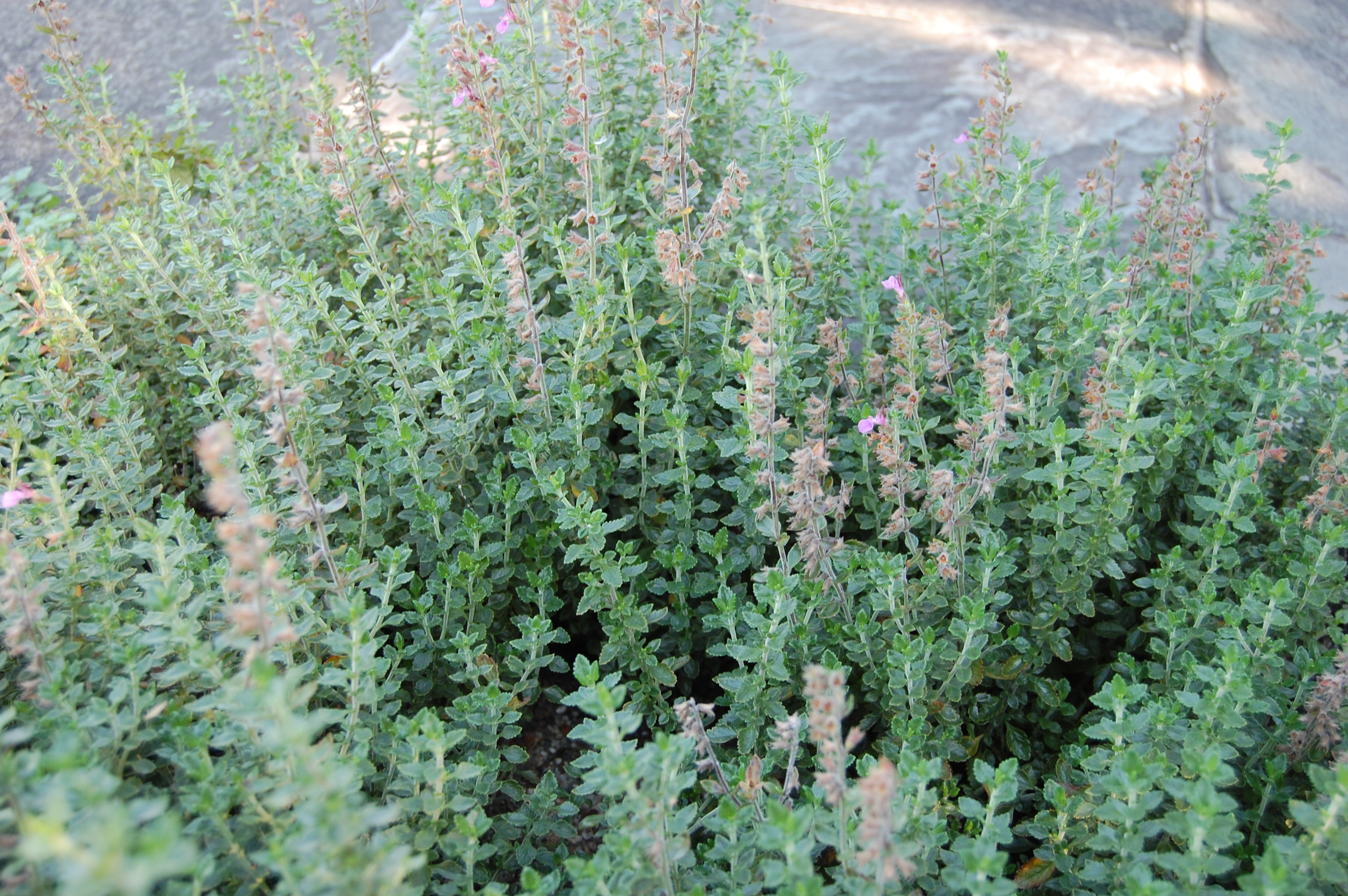Germander (Teucrium chamaedrys) is a small shrubby evergreen plant that is little known today but was once used extensively in the knot gardens that were beloved in Elizabethan England. Similar to the boxwood in use today, germander is well suited to knot gardens because of its petite size and ability to be pruned into diminutive hedges.
Germander is native to Europe and southwestern Asia. Here in the US, it is hardy from zone 5 to 9. In zone 5, it is best to grow it in a protected area because it is not reliably hardy during harsh winters. It prefers dry, well-drained soil and full sun. Left unpruned, germander will reach a height of up to two feet. It flowers beginning in late June creating clouds of mauve or pink flowers in the garden.
Propagation is usually done through cuttings taken in the spring or early summer or by division done in the fall. It can also be grown from seed. You have several choices when pruning germander depending on how you plan to use it.
If you are growing it as a specimen plant in your herb garden, you can either shear off the flowers when it has finished blooming or you can shear off the flowers and prune the plants back within a few inches of the height that you want the plant to grow.
If you are using germander as a formal hedge such as a knot garden or as an edging in your herb garden, you will want to plant it close together, leaving only 6 inches between each plant. You don’t want it to bloom, so you will prune it several times during the growing season to keep your hedge neat and flower-free.
Traditionally, germander was used to treat gout. In modern times, it is used to attract beneficial insects such as bees who feast on the pollen in its flowers. It is also the nectar plant for several types of moths found in central Europe.
Germander is a useful herb that can be used as an ornamental plant, an edging in your garden or to attract beneficial insects to your garden.


3 Comments on “Germander”
Pingback: Germander, a Flexible Herb | Advice From The Herb LadyAdvice From The Herb Lady
Pingback: 44 Nutritious Vegetables That Will Grow in Shaded Areas in Your Garden
Pingback: 44 Nutritious Veggies That Will Grow in Shaded Locations in Your Garden